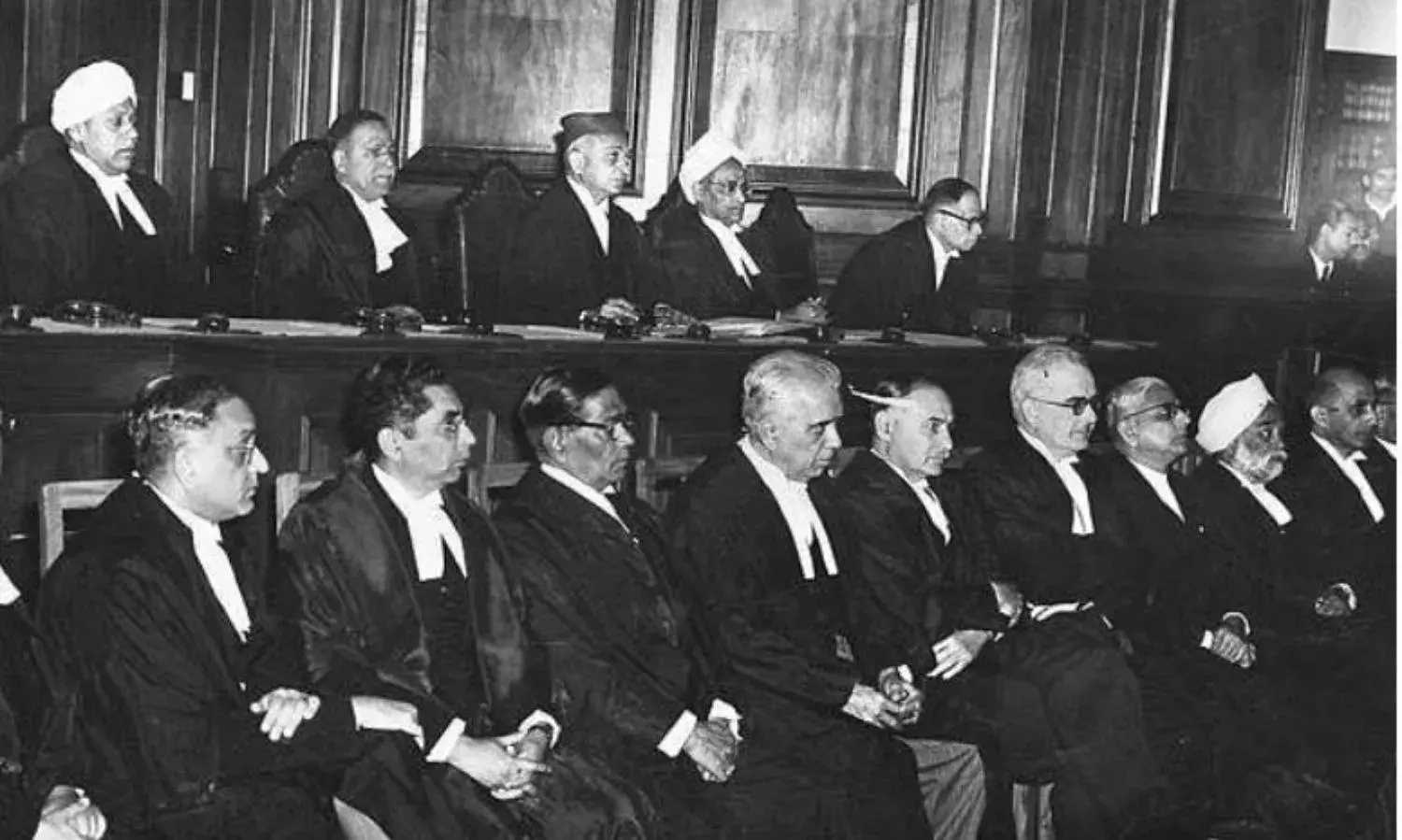An Independent Supreme Court Is a Must for Democracy
Tolerance for dissent;

THE conviction of senior lawyer, Prashant Bhushan, of criminal contempt of court by a three-member bench of the Supreme Court has lowered the image of the institution. It shows the highest court of the land as being intolerant of criticism and using the contempt law to punish dissent.
The two tweets of Prashant Bhushan, which were found to be scandalising the court, do not warrant any such conclusion. There have been numerous criticisms and charges made by former judges of the Supreme Court on various judgments and aspects of the court’s functioning in recent times. Are they to be held guilty of bringing the institution of the court into disrepute? If no action was taken against them, why then these double standards?
The three-member bench has yet to pronounce the sentence of punishment against Bhushan. The overwhelming protests against the conviction led the court to ask Bhushan to apologise and end the matter. Since Prashant Bhushan has refused to apologise for what he believes to be fair criticism, it remains to be seen what the verdict will be.
The conviction of Bhushan in the contempt case cannot be seen in isolation. It is a part of a number of disturbing trends which have emerged in recent years about the deliverance of justice.
In the past one year, these trends have become more pronounced. The most glaring example is how issues connected with Jammu & Kashmir, both constitutional and concerning fundamental rights, have been addressed. The court has still not heard the petitions challenging the validity of the constitutional amendment concerning Article 370 and the division of state into two union territories.
The court has yet to protect the rights of citizens in the matter of being deprived of 4G network connection in Jammu & Kashmir for over a year. The court ended up asking the government committee which imposed the ban to review it.
As for habeas corpus petitions of people in illegal detention, the Supreme Court has abdicated responsibility to make the executive accountable for the deprivation of the right of liberty of the citizen.
Recently there was a bizarre episode when the State declared in court that Congress leader Saifuddin Soz was not under detention and free to move outside the house. The very same evening, media visuals showed him being barred from coming out of his house. Yet this did not move the court to charge the authorities with contempt.
In the cases related to the plight of migrant workers, the Supreme Court at first refused to intervene and on the contrary made comments which showed the distance between the court and human rights. Indeed on these and many other issues, High Courts have been much more sympathetic and in tune with the reality of the suffering of migrant workers.
It is now two and a half years since the petitions challenging electoral bonds were moved in court – an issue which has a vital bearing for democracy in the country. The court as yet has found no time for the case.During the pandemic, the court decided to “prioritise” cases that it would take up. The abrogation of Article 370, the dismantling of the state of J&K, and the electoral bonds issue were however not considered as “priorities.”
The court earlier under a bench headed by then CJI Ranjan Gogoi had fixed daily hearings over forty sessions to give the verdict on the Ayodhya dispute. It delivered a verdict which was in line with the promise made by the ruling party to build a Ram temple at the site where the Babri Masjid had stood. However, in contrast, when it came to the verdict given by a five-member bench allowing entry of women into the Sabarimala temple, the bench which heard review petitions did not dispose of the review. Instead it referred it to a larger bench to look into certain questions of law – something which is considered to be outside the ambit of a bench dealing with review petitions.
Subsequently, the Chief Justice of India constituted a nine-member bench to look into these questions. This judicial maneouvre was in tune with the ruling party’s view that “faith” should have precedence over the law and the constitution.
The government has been interfering in the appointment of judges to the Supreme Court, starting with the stalling of the appointment of Gopal Subramanium who was recommended by the collegium; it has been influencing the promotion and transfers of judges of the High Court; it has been providing perks to retiring chief justices such as the appointment of Justice Sathasivam as the governor of Kerala and nominating Justice Gogoi as a member of the Rajya Sabha.
A judiciary seen to be pliable to the requirements of the executive is an alarming development. The role of the judiciary to make the government accountable when it violates the law and constitutional norms and to protect the fundamental rights of citizens gets compromised.
It is heartening that more and more members of the legal fraternity – retired judges, jurists and members of the bar – are questioning these trends in the higher judiciary. The widespread protests against the contempt conviction of Prashant Bhushan and the support extended to his cause show that the push back has begun.
Prakash Karat is a member of the CPI-M Politburo.
Cover Phtoograph: Members of the Federal Court that preceded the Supreme Court of India

